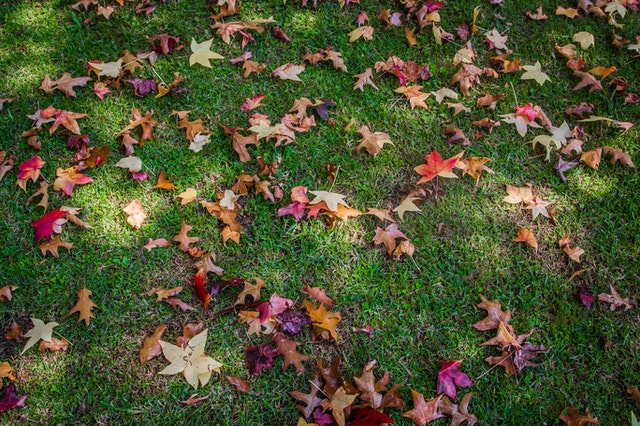 When it comes to landscaping and lawn maintenance, many homeowners think about planting flowers to add color in the spring, or about keeping the jungle at bay during the summer with more frequent mowing and edging. If fall landscape maintenance is considered at all, it’s probably just raking or blowing leaves. However, fall is actually one of the most important seasons of the whole year when it comes to landscape maintenance! The effort that goes into your lawn and garden during the fall will pay off in the spring, so be sure to check these fall landscaping to-dos off your list… Or give us a call at 770-893-1254 and let us do it for you!
When it comes to landscaping and lawn maintenance, many homeowners think about planting flowers to add color in the spring, or about keeping the jungle at bay during the summer with more frequent mowing and edging. If fall landscape maintenance is considered at all, it’s probably just raking or blowing leaves. However, fall is actually one of the most important seasons of the whole year when it comes to landscape maintenance! The effort that goes into your lawn and garden during the fall will pay off in the spring, so be sure to check these fall landscaping to-dos off your list… Or give us a call at 770-893-1254 and let us do it for you!
Fall Landscaping in North Georgia
De-leaf your lawn.
Just because removing the leaves from your lawn isn’t the only important fall yard maintenance job, doesn’t mean it’s not an important one! Raking or blowing the leaves off your grass is essential. Failure to do so can put your whole lawn at risk because over time, moisture and decay cause the leaves to meld together, essentially suffocating the grass due to lack of airflow. This impermeable layer of leaves can also trap moisture underneath it, creating an ideal environment for a fungal infection to develop.
Want to put those leaves to good use, rather than bagging them up for yard waste collection? Dried leaves are great for composting, or for shredding and using as mulch. You can also make your own leaf mold. There are leaf shredders you can use to break your leaves down, but you can also mulch leaves with a lawnmower. Whatever you do, don’t try to mulch with unshredded leaves—they will blow away, making a mess of your yard and defeating the purpose of mulching in the first place by leaving plants exposed to the elements.
Give it some breathing room.
We all need to stop and take a deep breath sometimes, and the same goes for your lawn. Fall is a great time to aerate your lawn, increasing the flow of air, water, and nutrients to your lawn’s roots. If your family uses the lawn frequently—whether from kids running around or from hosting plenty of cook outs—the soil may be compacted, which makes aeration even more important.
Get ahead of the weeds by applying a pre-emergent.
It might surprise you to learn that weeds can germinate even in the winter, but it’s true! As they say, the best defense is a good offense, so set your lawn up for success in the spring by applying a pre-emergent now. Keep in mind that pre-emergent stops germination, so you should not use it if you plan to overseed your (typically Fescue) lawn. However, if your lawn is primarily Bermuda or Zoysia, you’re in the clear to apply pre-emergent.
Maintain your maintenance routine…With a few slight variations.
Just because the calendar says the seasons have changed, doesn’t mean the weather agrees. It’s important to keep doing your regular landscape maintenance, like mowing, edging, and watering, until the grass has stopped growing. You should, however, raise your lawnmower blade. The grass should be slightly longer than you’d necessarily keep it in summer, but not completely overgrown. That sweet spot between too short and too tall will prevent your lawn from freeze damage on cold days, and from diseases that can occur when grass gets too long and tangled. Your mowings will get further apart as the season goes on, and when you notice that the grass is no longer growing, you’ll know it’s time to stop for the season.
Once you’ve determined that you’re done mowing for the year, don’t forget to winterize your lawnmower! Clean out any grass clippings lodged beneath it, empty the gas tank, and sharpen the blade. That way you’ll be all set to go when spring rolls around.
Good luck with your fall lawn maintenance if you choose to dive in yourself… Or give us a call to find out how we can take lawn maintenance off your plate and keep your landscaping looking its best!



